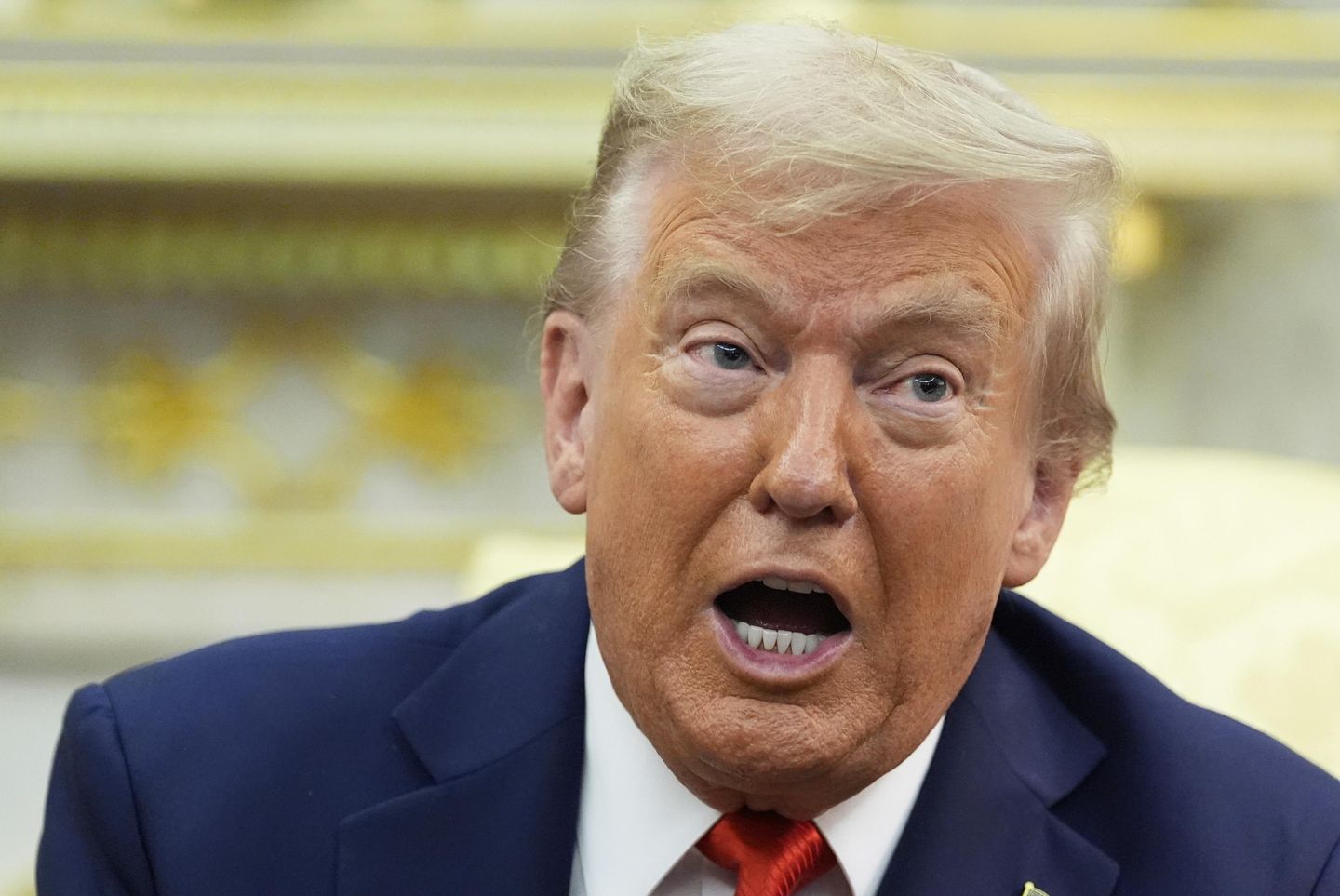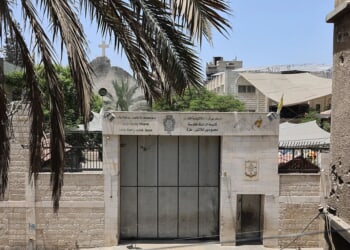
NEWS AND ANALYSIS:
National security analysts are reacting harshly to President Trump’s announced plan to double the number of Chinese students allowed into the United States to 600,000.
Mr. Trump said amid ongoing trade talks with China that he wants to allow the 600,000 Chinese to attend American universities to help the schools financially.
“I hear so many stories that we’re not going to allow their students,” Mr. Trump told reporters. “We’re going to allow their students to come in. It’s very important, 600,000 students. It’s very important. But we’re going to get along with China.”
At a Cabinet meeting on Tuesday the president said he believes its “very insulting” to say Chinese students are not welcome.
Without the foreign students ““our college system would go to hell very quickly. And it wouldn’t be the top colleges, so it’d be colleges that struggle on the bottom,” Mr. Trump said.
The president said he told Chinese President Xi Jinping that the United States is “honored to have their students here.”
“Now, with that, we check in with careful [monitoring] and we see who’s there,” he added.
Former State Department China policymaker Miles Yu said allowing Chinese students in the country poses a national security danger.
Driven by a non-market economy controlled by the Chinese Communist Party that lacks constitutionally allowed property rights, the communist regime stifles free thought and academic autonomy and harbors an unrelenting ambition for global hegemony, he said.
Hundreds of thousands of Chinese students who attend American universities are vital for the CCP’s goal of technological and military dominance.
Nearly 90% of the estimated 7 million Chinese students who studied abroad, mainly in the United States, return to serve the CCP and its machinery of control and aggression, Mr. Yu said.
“For the United States, this is a dangerous and one-sided arrangement,” said Mr. Yu, now director of the China Center at the Hudson Institute.
“American universities invest resources to educate these Chinese students, who then take their skills and knowledge back to a regime that seeks to undermine U.S. global standing.”
Mr. Yu said the United States must decisively curb China’s access to American schools and end the CCP’s unchecked exploitation of the higher education system for its authoritarian goals.
China expert Gordon Chang also said allowing 600,000 Chinese students in the country is a security threat.
“Do we need 600,000 potential Chinese spies in America,” he said X. “That’s in addition to all the actual ones here already.”
Mr. Chang, with the Gatestone Institute, also questioned how the United States will educate the next generation of Americans when “we sell their university slots to China’s future communists.”
Mr. Trump’s plan for doubling Chinese student enrollment is a sharp reversal of an earlier policy targeting reductions in Chinese students in the United States.
In May, the State Department said it had begun aggressively revoking visas for an estimated 270,000 Chinese students over concerns they are stealing American technology.
The visa cancellations were targeted at students with connections to the CCP.
Secretary of State Marco Rubio said in a statement announcing the action that visa scrutiny for Chinese are being revised and given enhanced scrutiny.
The action is in line with policies of putting “America first, not China,” Mr. Rubio said.
The shift on Chinese students comes as Mr. Trump is seeking a summit meeting with Mr. Xi as early as this fall.
Earlier this year, Mr. Trump reversed course on restricting exports of Nvidia microchips by allowing the major artificial intelligence firm to sell some of its advanced chips to China.
U.S. security officials have said Chinese students and researchers are obtaining critical U.S. research, intellectual property and technology that will enhance the Chinese military.
Rep. John Moolenaar, chairman of the House Select Committee on the Chinese Communist Party, said the student visa program had become “a Trojan horse for Beijing” that provides unrestricted access to top research institutions that poses “a direct threat to our national security.”
A recent think tank report reveals that U.S.-based Chinese students are organized through student and scholar groups that are funded and controlled by Beijing.
“Evidence from U.S. government sources — including the State Department, FBI and congressional commissions — shows that many [Chinese Students and Scholars Associations] are closely linked to Chinese consulates and operate under guidance or financial support from Chinese diplomatic missions,” the report by the CCP Biothreats Initiative stated.
China opposed the earlier plan to revoke student visas as unjustified. “This politically motivated and discriminatory move exposes the U.S. hypocrisy over freedom and openness,” Foreign Ministry spokeswoman Mao Ning said in May.
The State Department referred questions about the Chinese students to the White House. White House National Security Council spokesmen did not respond to email requests for comment.
Space Force launches X-37 space plane
The Space Force on Thursday conducted the latest launch into space of the X-37B space plane, known formally as the orbital test vehicle.
The launch from the Kennedy Space Center in Florida was the eighth mission for the space plane that analysts say may serve as a future platform for the Space Force’s so far non-public counterspace weapons.
The Space Force said in a statement that the plane will conduct a variety of tests and experiments during its mission.
“These operational demonstrations and experiments comprise of next-generation technologies including laser communications and the highest performing quantum inertial sensor ever tested in space,” the statement said.
The mission will conduct laser communications demonstrations involving proliferated commercial satellite networks in low earth orbit, the Space Force said.
Although Space Force did not say so, space lasers can also be used to attack satellites.
Space-based lasers also could be part of President Trump’s plan for a national missile defense dubbed Golden Dome for America.
Lasers are regarded by experts as a key antidote to China’s high speed hypersonic missiles.
The latest X-37B mission’s “laser communications demonstration will mark an important step in the U.S. Space Force’s ability to leverage proliferated space networks as part of a diversified and redundant space architectures,” said Chief of Space Operations Gen. Chance Saltzman.
China obtained information on the X-37 in the early 2000s from Greg Chung Dongfang, a Boeing engineer who was convicted of spying for Beijing. Court papers in the Chung case revealed that Chung held internal Boeing documents at his home, including a report labeled “Boeing proprietary” called “X-37 space plane overview.”
In 2010, Chung was convicted of economic espionage and acting as an unregistered agent for China and sentenced to 15 years in prison.
China launched its first space plane that appears similar in shape to the X-37 in 2020, likely with the help of stolen U.S. technology.
A Chinese technical journal, Winged Missiles Journal, stated in a 2014 article that the X-37B “possesses robust space warfare capabilities, enabling it to execute diverse attack missions against low-orbit targets.”
“The X-37B can serve as an anti-satellite platform carrying hard and soft kill weapons such as laser weapons, microwave weapons, kinetic weapons, contaminants, and net-deploying systems,” the report said.
The plane can rapidly maneuver near space targets and employ onboard weapons for attack, using a robotic arm, directed energy strikes or kinetic attacks, the article said.
China to reveal new weapons at upcoming parade
U.S. and allied intelligence agencies are set to closely monitor an upcoming military parade in Beijing where China’s military is expected to show off new weapons.
Chinese state media already has previewed some of the new weapon systems that were revealed during parade rehearsals for next month’s 80th anniversary of the end of World War II.
Along with goose-stepping troops, the People’s Liberation Army will show off new YJ-series hypersonic anti-ship missiles, and a new, more lethal version of its DF-26 intermediate-range missile that the Chinese have dubbed the “Guam Killer” for its ability to hit the major U.S. military hub in the western Pacific.
New YJ-17, YJ-19 and YJ-20 missiles were shown in one rehearsal for the Sept. 3 parade.
Another weapon previewed by state media is a new variant of a road-mobile intercontinental ballistic missile.
Submarine warfare weapons will include two new extra-large unmanned underwater vehicles identified in photos as the AJX002 and a larger one hidden under a tarp. The AJX002 appears similar to Russia’s Poseidon nuclear-tipped torpedo.
New tanks, armored vehicles, artillery guns, advanced radar and a laser weapon also are expected to be unveiled.
China’s large arsenal of aerial drones is also likely to be featured in the parade.
A Chinese military spokesman told reporters all weaponry in the parade will be domestically produced and in service. The arms reflect the PLA’s ability to “adapt to technological developments and evolution of warfare forms, and to win future wars,” the spokesman said.
Both Japan and Taiwan have called for regional states to shun the parade, noting that Chinese Communist Party forces did little or no fighting during World War II.
Most of the war against Japan was carried out by the Chinese Nationalist forces.
Beijing calls the war “the Chinese People’s War of Resistance Against Japanese Aggression and the World Anti-Fascist War.”



![Steak ’n Shake Mocks Cracker Barrel Over Identity-Erasing Rebrand [WATCH]](https://www.right2024.com/wp-content/uploads/2025/08/Steak-n-Shake-Mocks-Cracker-Barrel-Over-Identity-Erasing-Rebrand-WATCH-350x250.jpg)



![Human Trafficking Expert Details Horrific Biden Admin Endangerment of Migrant Kids [WATCH]](https://www.right2024.com/wp-content/uploads/2025/07/Human-Trafficking-Expert-Details-Horrific-Biden-Admin-Endangerment-of-Migrant-350x250.jpg)

![Mount Rushmore Could Get Trump Upgrade Under GOP Push [WATCH]](https://www.right2024.com/wp-content/uploads/2025/07/Mount-Rushmore-Could-Get-Trump-Upgrade-Under-GOP-Push-WATCH-350x250.jpg)
![Soros Network, Others Behind LA Riots [WATCH]](https://www.right2024.com/wp-content/uploads/2025/06/Soros-Network-Others-Behind-LA-Riots-WATCH-350x250.jpg)





